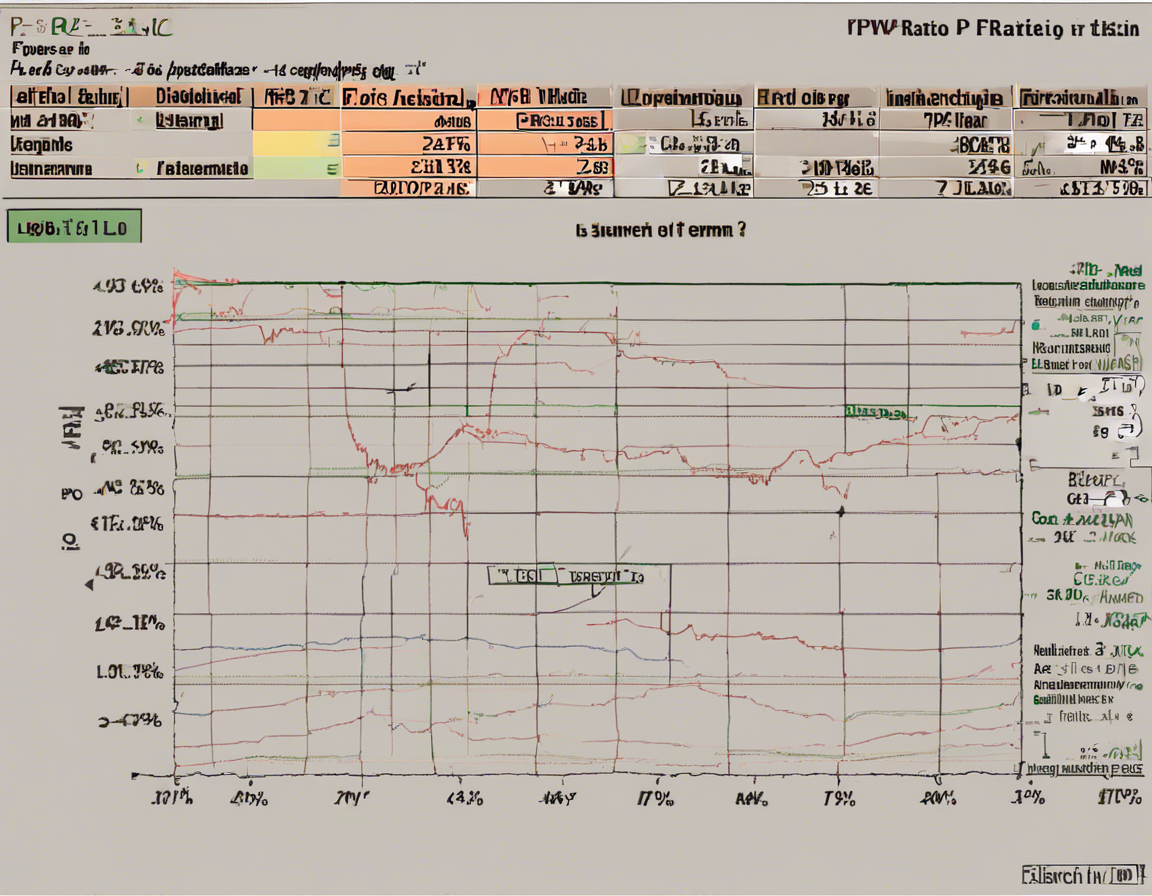When it comes to investing in the stock market, there are multiple metrics and ratios that investors use to evaluate the attractiveness of a particular stock. One such important metric is the Price-to-Earnings (PE) ratio, which is a fundamental indicator used to assess whether a stock is overvalued, undervalued, or fairly valued.
What is PE Ratio?
The PE ratio is a valuation ratio that compares a company’s current share price to its earnings per share (EPS). It is calculated by dividing the market price per share by the earnings per share. The formula is:
PE Ratio = Market Price per Share / Earnings per Share
Interpreting PE Ratio
A high PE ratio may indicate that a stock is overvalued, while a low PE ratio could suggest undervaluation. It is important to compare a company’s PE ratio to industry peers, historical values, and the overall market to get a better understanding of its valuation.
Types of PE Ratios
- Trailing PE Ratio: Based on historical earnings.
- Forward PE Ratio: Based on future earnings projections.
- Shiller PE Ratio: Adjusted for inflation over the business cycle.
Importance of PE Ratio
- Valuation: Helps investors gauge if a stock is expensive or cheap relative to its earnings.
- Risk Assessment: High PE ratios can signal higher risk and potential volatility.
- Comparative Analysis: Allows investors to compare companies within the same industry.
- Investment Decision: Aids in making informed decisions based on valuation metrics.
Limitations of PE Ratio
- Earnings Manipulation: Companies can manipulate earnings to artificially influence PE ratios.
- Industry Variations: Different industries have different typical PE ratios.
- Economic Conditions: PE ratios can be influenced by macroeconomic factors.
Conclusion
In conclusion, understanding and analyzing the PE ratio is crucial for investors looking to make informed decisions in the stock market. By comparing PE ratios across companies, industries, and historical data, investors can gain valuable insights into the valuation and potential risks associated with a particular stock. While PE ratio is an essential tool, it should be used in conjunction with other financial metrics and analysis for a comprehensive investment strategy.
Frequently Asked Questions (FAQs)
-
What is a good PE ratio?
A good PE ratio varies by industry, but in general, a lower PE ratio indicates better value. However, it is essential to compare the PE ratio of a company to its peers and historical averages. -
Can a negative PE ratio be meaningful?
A negative PE ratio typically indicates that the company has negative earnings. This could be due to various reasons such as temporary losses or one-time charges. -
How do you calculate the earnings per share (EPS)?
EPS is calculated by dividing a company’s net income by its total number of outstanding shares. It represents the portion of a company’s profit allocated to each outstanding share of common stock. -
Is a high PE ratio always bad?
A high PE ratio is not necessarily bad if it is justified by strong earnings growth prospects. Investors should consider the company’s growth potential, industry dynamics, and overall market conditions. -
Why is the PE ratio important for value investors?
Value investors focus on buying undervalued stocks, and the PE ratio is a crucial tool for identifying potential value opportunities. A low PE ratio may indicate that a stock is undervalued and could be a good investment opportunity. -
Can the PE ratio alone determine the attractiveness of a stock?
While the PE ratio is an essential tool for valuation, it should not be used in isolation. Investors should consider other factors such as industry trends, company fundamentals, growth prospects, and overall market conditions. -
How often should investors monitor PE ratios?
Investors should regularly monitor PE ratios, especially when considering buying or selling stocks. Changes in earnings, market conditions, or industry dynamics can influence a company’s valuation, making it essential to stay informed. -
What are the risks of relying too heavily on PE ratios?
Relying too heavily on PE ratios can lead to overlooking other crucial factors such as debt levels, cash flow, competition, and management quality. It is essential to take a holistic approach to investment analysis. -
How do different PE ratios (trailing, forward, Shiller) provide different insights?
Trailing PE ratios reflect historical earnings performance, while forward PE ratios are based on future earnings expectations. The Shiller PE ratio smoothens out fluctuations in earnings over a business cycle, providing a long-term perspective on valuation. -
Can a company with a high PE ratio still be a good investment?
A company with a high PE ratio can still be a good investment if it has strong growth prospects, market leadership, innovation, and a competitive advantage. Investors should look beyond the PE ratio to assess the overall quality and potential of the business.
